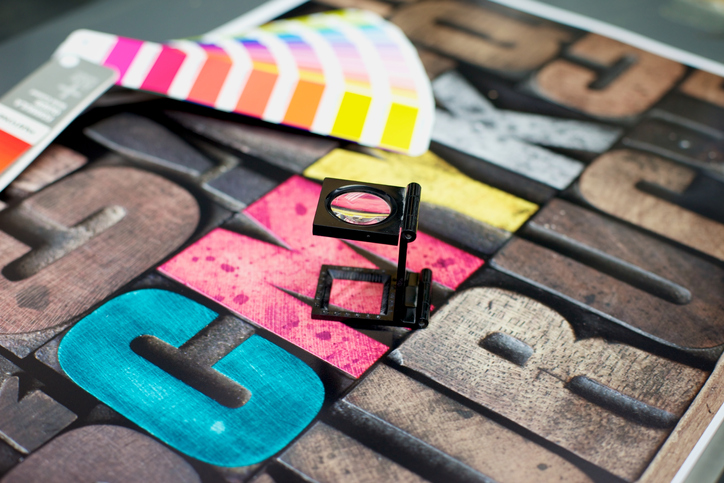Print Perfection: Achieve Foolproof Production with this Pre-Printing Checklist

Have you ever rushed out the door and slipped on an icy sidewalk?
Or made a hasty decision in traffic that cost you loads of energy in the long run?
Accidents happen when we hurry, and that’s true in both life and work. In project management, sometimes people fail to allow adequate time for extra details or unexpected delays. As you draw close to a marketing deadline, errors are made, and important details are overlooked.
According to large-volume print production expert Allen Glazer, marketers should allocate 25-75% of a design project’s budget for printing costs. And if you don’t catch a mistake in prepress, it will be much more costly to fix down the line.
Do you want to be proud of your next print project while smoothly transitioning from design to print? Use this handy preflight checklist to help you eliminate chaos when a deadline is near.
Thoroughly Proof Your Piece
Scour your document for typographical, punctuation, margin, or grammatical errors.
Have one or two other people proof as well. Mistakes are easy to miss but embarrassing to everyone. To slow yourself down, trying reading your document out loud or read your text backward.
Include Correct File Formats and Crop Marks
It is crucial for you to send the correct file formats (like InDesign, PDFs, etc.) for your project.
This includes support files -- such as original images, artwork, and fonts -- in clearly labeled files. If you have to convert files, check for any corruption or formatting errors.
To maintain your design’s integrity, it is important to link all aspects (images, artwork, and fonts) into a high-resolution PDF. This includes crop marks for bleeds displaying the exact size of your trimmed and finished piece.
Use Correct Resolution
The resolution of image files needs to be higher for print: a jpeg file needs a minimum resolution of 300 DPI (Dots per inch).
If your file does not meet that standard, the quality will not be as sharp or distinct. Also, be sure to clean up distracting resizing or conversion artifacts and lighten any images that may require an ink density too high for the type of paper being used.
Use Consistent Page Layouts
Clean layouts communicate professionalism and make documents easier to read.
Proof your design (especially multi-page documents) to ensure margins are consistent on every page, including booklet covers or pages that feature charts or infographics.
Convert Image Formats to CMYK
RGB JPEG is the default image format for photographs from many cameras, cell phones, and mobile devices.
Screen images on TVs, computers, and cameras use red, green, and blue in varying percentages, but commercial printers typically separate artwork into four-color plates (cyan, magenta, yellow, black).
Most design software will allow you to convert or save a file in CMYK easily, or there are several free online file conversion tools available.
Provide a Printed Proof
A surefire way to ensure a quality product is to generate a poof and discuss it with your printer before the final printing.
It’s also important to discuss turnaround times so you can plan your milestones accordingly and allow for multiple print runs (if necessary).
Nervous? Don’t worry. With local printing, you get the benefit of a work-in-progress partnership. While it’s helpful to have a preflight checklist, the trained eye of a professional is even better! Our goal is to increase your productivity, reduce your stress, and save you time and money as your prep and proof your prints.

